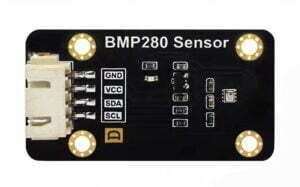PIC12F629 Guide
Exploring the PIC12F629: A Big World in a Small Chip
Welcome to the world of the PIC12F629. This 8-bit microcontroller from Microchip is small in size but powerful in function. This guide will take you on a deep dive into its core architecture, key features, applications, and practical projects. Whether you are a beginner or an experienced engineer, you will find valuable information here.
Core Specifications at a Glance
The power of the PIC12F629 lies in its carefully designed RISC architecture and a series of built-in peripherals created for efficiency and stability. Here are its most critical technical parameters that contribute to its excellent performance across various applications.
Core Processor
8-bit PIC
High-Performance RISC CPU
Program Memory (Flash)
1.75 kB
(1K x 14 Instructions)
Operating Voltage
2.0V - 5.5V
Wide voltage range
Operating Speed
20 MHz
200ns instruction cycle
I/O Pins
6 Pins
Independently configurable direction
Standby Current
~1 nA
Ultra-low power consumption
Crucial Choice: PIC12F629 vs. PIC12F675
When choosing a microcontroller, developers often hesitate between the PIC12F629 and its "sibling" model, the PIC12F675. They share almost the same core architecture and most functions, but one key difference determines their respective ideal applications.
The single key difference is: the PIC12F675 has a built-in 10-bit Analog-to-Digital Converter (ADC), while the PIC12F629 does not.
This means if you need to read analog sensor values (e.g., temperature, light, potentiometers), the PIC12F675 is the clear choice. If your project only involves digital signals (e.g., switches, LED control), the PIC12F629 is more cost-effective.
Real-World Applications
Thanks to its low cost, low power consumption, and high stability, the PIC12F629 plays the role of a "behind-the-scenes hero" in many industries. From industrial automation to everyday consumer electronics, its presence is everywhere.
🏭 Industrial Control
Used in small-scale automation devices to monitor and control environmental parameters like temperature and humidity, as well as for simple process control to ensure stable production.
📱 Consumer Electronics
Widely used in battery-powered devices like smart toys, remote controls, and small home appliances (e.g., smart rice cookers) due to its power efficiency.
🚗 Automotive Electronics
Used for basic control tasks, such as managing dashboard indicator lights, power windows, and interior ambient lighting.
From Theory to Practice: Featured Project Tutorials
The best way to learn about microcontrollers is through hands-on practice. We have selected several projects, from simple to advanced, to help you master the core programming techniques of the PIC12F629 and turn theoretical knowledge into tangible results.
"Simplest" LED Flasher
This is the "Hello World" of microcontrollers. By cleverly using the Watchdog Timer (WDT) to automatically reset the chip, the LED blinks periodically without complex delay loops, making it an excellent starting point to test your development environment and chip.
Simple Door/Window Alarm
A very practical and fundamental project. Learn how to read input signals from an external switch (like a door sensor) and use the signal to drive a buzzer, mastering core input/output control.
Elevator Floor Counter
By connecting two buttons (up/down) and an LED display, you can create a simple counter. This project is a classic case study for learning how to handle button input and drive a display.
Software PWM for RGB Lighting
The PIC12F629 lacks a hardware PWM module. This project will teach you how to emulate PWM signals in software to control the brightness and color of an RGB LED, creating cool effects like breathing lights and color gradients.
Whistle-Activated Key Finder
Uses the chip's built-in analog comparator to detect a specific sound frequency (like a whistle). When the signal is detected, a buzzer is activated to help you find your keys. This is an interesting introductory project for analog signal processing.






